The Stray Dogs of Pristina, Kosovo
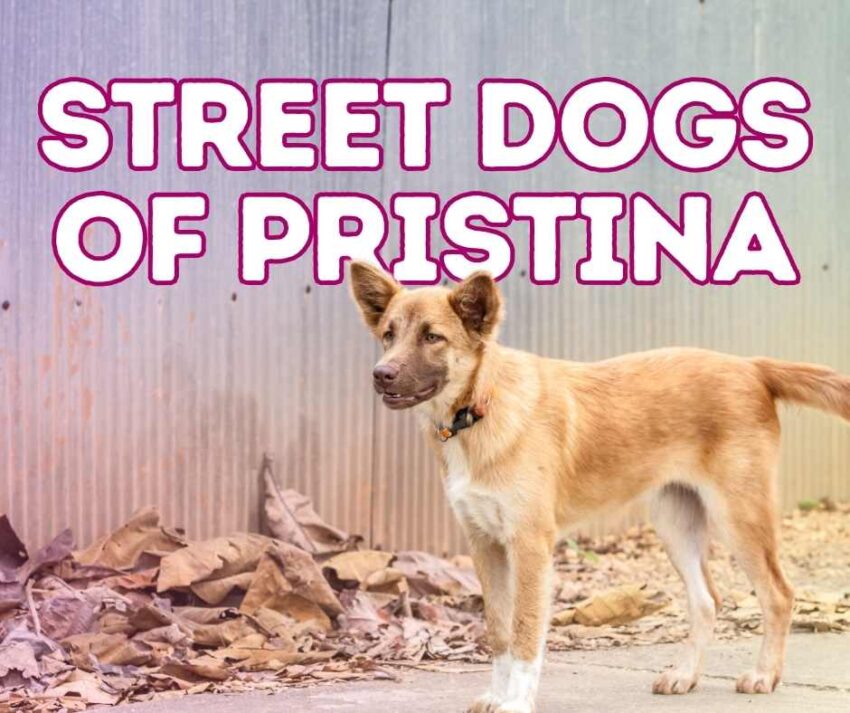
In this article, I take a deep dive into all angles of the stray dog crisis in Pristina. Everything in this article is based on my personal experience as an animal activist, my efforts to rescue and foster street dogs, and my collaboration with local rescue organizations.
Animal mistreatment is a global issue, evident even in my home country, Mexico, where stray dogs are prevalent. It is a sad reality that most countries worldwide, except for a privileged few, struggle to gain complete control over their stray dog populations. Despite the widespread nature of this problem, the stray dog situation in Kosovo rocked me to my core. When I claim it to be the worst place for dogs I’ve ever witnessed, I truly mean it. In this article, I’ll delve into the myriad factors that led me to this harsh statement, drawing from my two years of living in Prishtina.

Where do negative perspectives of dogs as a species come from?
Throughout history, different cultures and religions have assigned specific roles and reputations to various animals. Hinduism reveres cows, while Judaism and Islam forbid the consumption of pork. Similarly, attitudes towards dogs vary widely across different cultures.
While some cultures view dogs as devoted companions and cherished family members, others see them primarily as functional animals utilized for tasks such as hunting, herding, or security.
In Kosovo today, dogs are still very much perceived as functional animals rather than pets. The challenge I’ve encountered doesn’t stem from whether dogs live indoors or outdoors, or whether they receive family-like treatment, but rather from the generally negative perception of dogs. Many locals I have spoken to in my quest to understand the origins of these sentiments have attributed them to religion and education.
Are dogs Anti-Islam?
In certain interpretations of Islamic teachings, there are specific guidelines regarding the cleanliness of dogs. Islamic beliefs traditionally consider dogs impure, particularly their saliva. This belief stems from certain sayings of the Prophet Muhammad that discourage unnecessary contact with dogs and stress the importance of cleanliness in Islamic rituals like prayer.
Garbage Feeders
I came across an article that sheds light on the historical connection between dogs and garbage management. Apparently, in the 1700s, cities across the Middle East utilized dogs to help keep streets clean by feeding them organic waste. However, after a disease outbreak, there was a shift in perception and waste management practices. Consequently, dogs, who fed on garbage, were also seen as a source of disease.
These are just a couple of historical insights that may still influence contemporary attitudes. Whatever the actual origins or combination thereof, the reality remains that Kosovo, with its predominantly Muslim society, struggles to peacefully coexist with dogs.
More articles about Dogs & Islam:
Although I find this topic fascinating, I will not do an in depth analysis of the role of dog’s in Islam. Here are a few articles I found interesting if you would like to learn more.
Street Dogs of Kosovo
The street dogs in Kosovo are, in essence, pests in the city.
What are pests? According to the definition, it’s any organism that spreads disease, causes destruction, or is generally a nuisance. These dogs reproduce prolifically and, much like their ancestors in the 1700s, rely on garbage for survival. However, in modern times, they scavenge not just from designated organic compost but rather from any edible scraps amidst the mountains of municipal waste. This represents a significant sanitary threat to the community.
The waste management situation in Kosovo is a disaster. Dogs will gather garbage bags and carry them up the hills, where they will dissect them for food. The wind then blows away all the garbage, literally covering the entire city in waste.
Who bears responsibility in this situation? Is it the dogs for instinctually seeking sustenance wherever they can find it, or is it the city for failing to both collect the waste and control the street dog population?
Believe it or not, there are many people who truly believe the issue lies solely with the dogs.
The belief that these dogs are dirty and responsible for the spread of disease persists because they continue to live among the city’s garbage. The cycle has not been broken.
Dogs vs Humans
The relationship between street dogs and humans has been an intriguing dynamic to observe as an outsider. When it comes to dogs, the prevailing sentiment among the majority of the population is one of sheer terror. It does not matter the shape, size or color; if a stray dog walks past, most people scream, squirm, and run. Parents are quick to shield their children from a dog walking by, instilling in them the belief that it is a creature of danger. Even my adorable, fluffy, clearly domesticated, and extremely well-trained Schnauzer, Lara, incites terror among pedestrians as she walks down the street.
It is evident that generations continue to pass down such attitudes. As long as parents continue to instill in their children the need to maintain both physical and emotional distance from dogs, cultural attitudes are unlikely to shift.
This fear is further fueled by the rare situation where a dog does become violent. Of course, sometimes it happens. Contrary to popular belief, dogs typically only resort to aggression when they feel threatened, not out of sheer enjoyment. However, humans often harass, kick, and intimidate street dogs due to the widespread fear of dogs.
I’ve often walked through the park with the dogs I feed trailing peacefully behind me, only for their behavior to change drastically when encountering certain individuals. Often, the dogs react by barking or displaying defensive behaviors, a response typically triggered by past harassment from those individuals. I’ve witnessed firsthand a group of teens throwing rocks at the dogs. Not all households raise their children to respect animals, and not all parents condone such behavior.
I’ve even seen toddlers (3 to 4 years old) attack my own dog on two separate occasions, with the child’s mother shockingly filming and laughing at one incident. True story.
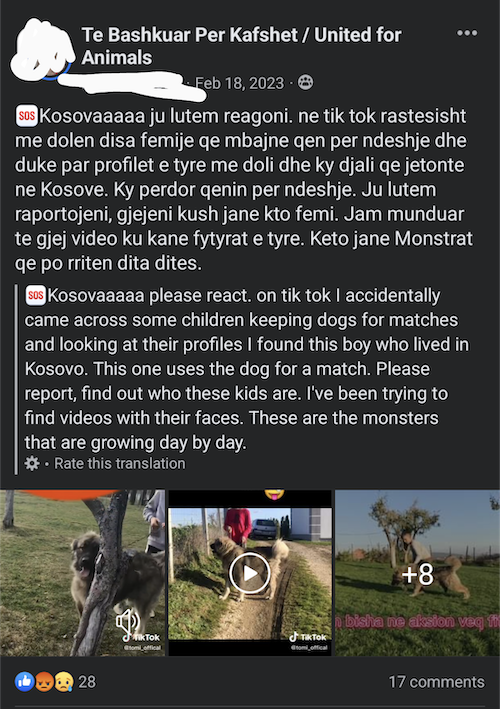
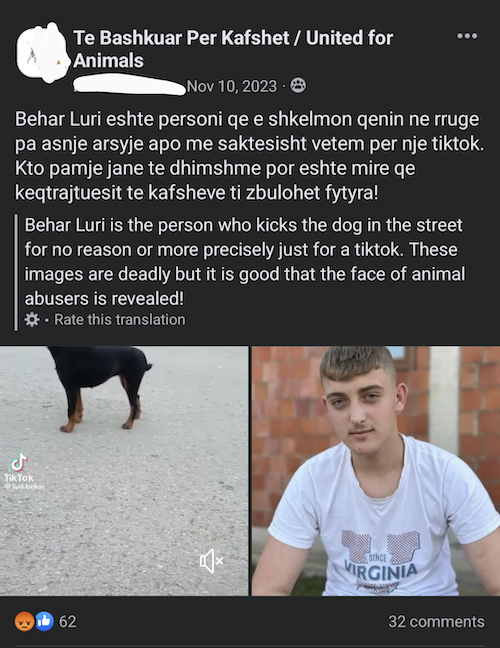
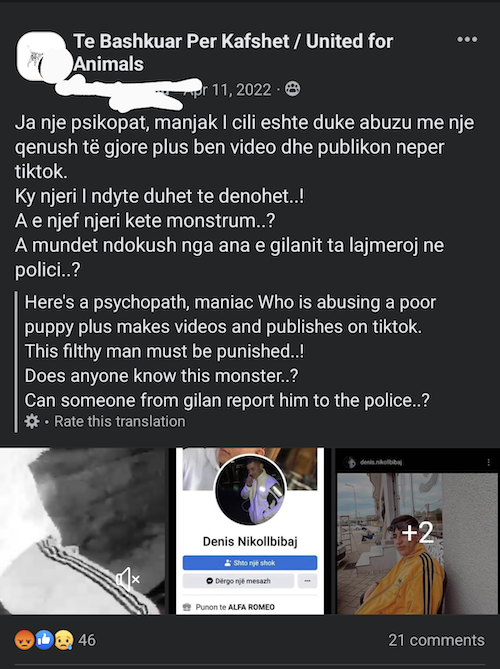
Screenshots from a community Facebook group denouncing animal abusers. Text is automatically translated from Albanian to English by Facebook, and may not offer accurate translation.
Recently, there has been a disturbing trend on platforms like TikTok, where teenagers or young men film themselves kicking or throwing rocks at street dogs. Even during the New Year festivities, some individuals were documented aiming fireworks at dogs for entertainment. Astonishingly, these videos garnered significant likes and support, perceived by people as comedic content.
These instances say a lot about the lack of respect that some people have for animals, yet even more so about the urgency that Kosovo faces to educate society about animal welfare and garner compassion towards all living beings.
SOLUTIONS - What is being done?
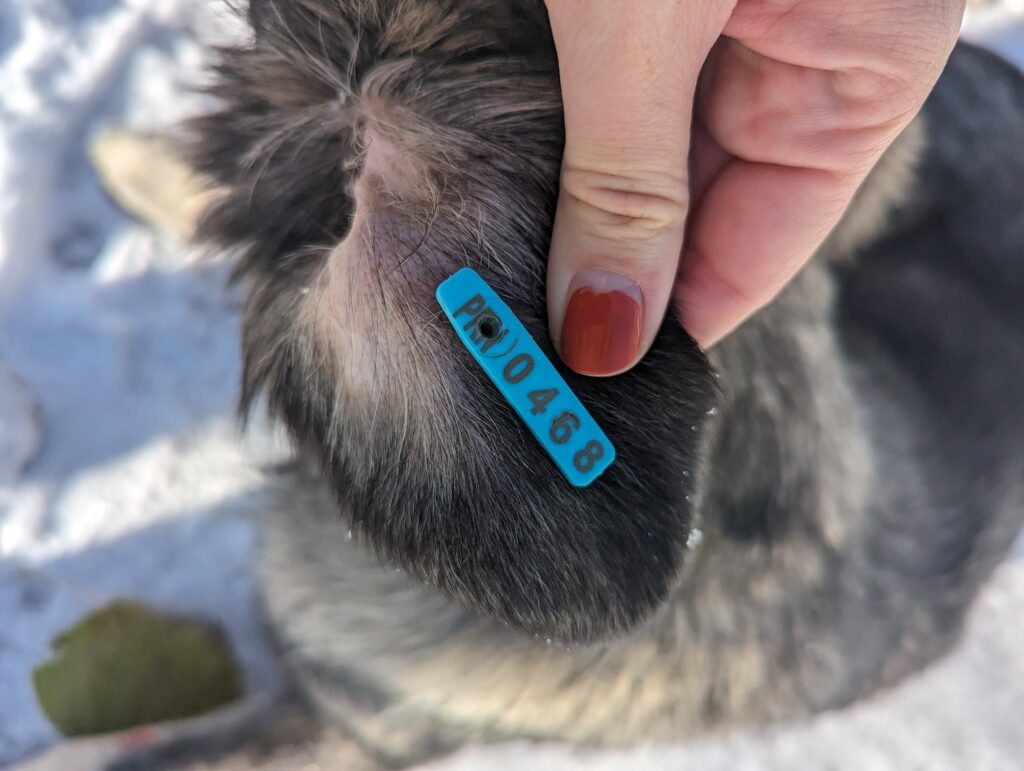
Municipalities
Over the years, there have been numerous campaigns aimed at lowering the rate of reproduction among street dogs.
Here’s how it typically worked: municipalities hired a group of veterinarians to spay and neuter a set number of dogs each month. The municipalities paid these vets to perform the surgeries and required them to affix a tag to the dog’s ear as proof of the procedure. A great initiative on paper, and one that continues to save hundreds of puppies from being born. But why didn’t it completely resolve the issue?
There were reports of some veterinarians exploiting the monthly allowance by simply replacing the tags on already spayed dogs with their own.
These campaigns continue. While many individuals assigned to the job are doing it honorably, it is evident that some are not. Here is a pup I came by a few months ago. Her ear bore a brand-new tag, and the incision on her belly, indicating a recent surgery, remained unsealed. She had no stitches; she was roaming the streets with an open wound.
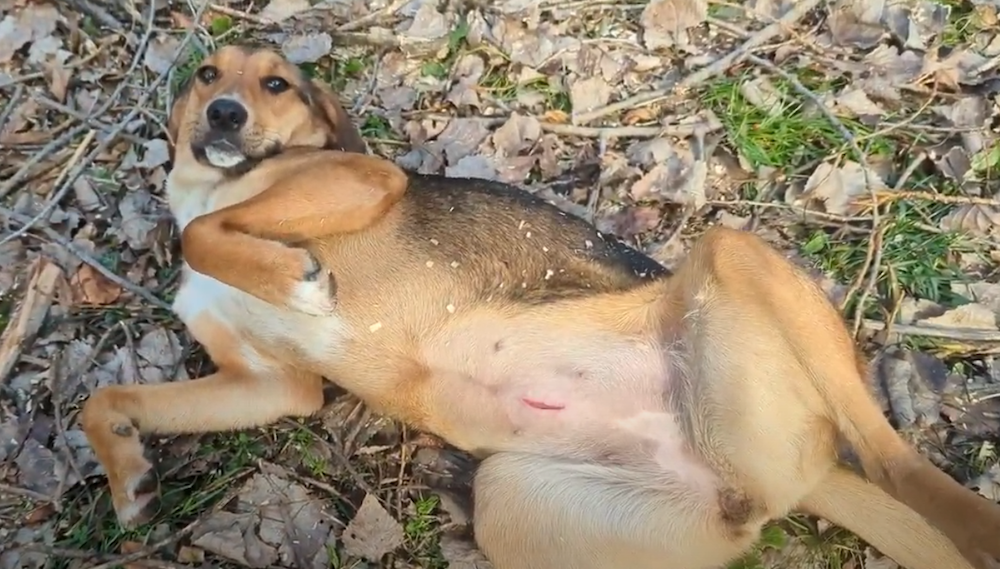
Freshly operated dogs are often dumped still asleep under anesthesia, at a park far away from where they were picked up. This leads the dogs to be disoriented, abandoned by their pack, and to become more violent in order to survive in a new environment. Simple actions like returning these dogs to their original location could significantly reduce their potential for aggression.
The poor oversight of these campaigns can be attributed to the low priority given to the issue. With the myriad of socio-political issues that Kosovo faces, street dogs are quite low on the list of political priorities. To some degree, this is understandable. However, I believe it is the mentality and cultural perceptions that acts as the biggest roadblock to change.
Dog Breeding
As a society, Kosovo has not collectively recognized dogs to be deserving of “pet-like” treatment. For generations, they’ve been chained outside chicken coops or used to protect livestock from predators like foxes or stray dogs. The concept of dogs as household pets is often seen as a Western import, gradually gaining traction among the rich.
While attitudes toward dogs as pets are evolving in Kosovo, it’s not necessarily for the right reason or in a positive direction. Purebred dogs, often bought at exorbitant prices from breeders, have become status symbols. Certain breeds like Huskies, Belgian Malinois, Chow Chows, Dobermans, and Toy Poodles are particularly sought after.
However, this growing demand for purebred dogs is creating the biggest problem of all – unregulated breeding. It’s now commonplace to see purebred dogs abandoned on Kosovo’s streets. Wealthy individuals purchase these puppies when they’re small and adorable, but once they grow and exhibit typical dog behaviors, they’re often downgraded to a life on a chain outside. When their behavior becomes problematic or aggressive due to lack of attention that a high energy dog demands, they are dumped at local parks. This cycle repeats itself endlessly, day after day
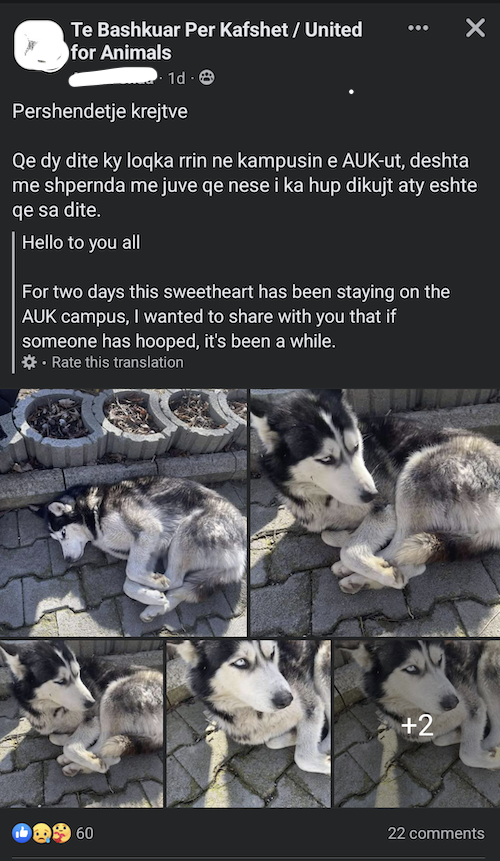
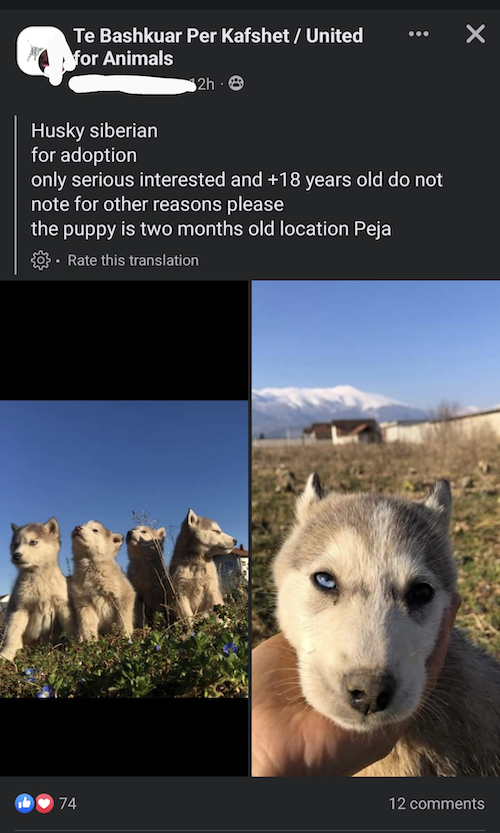
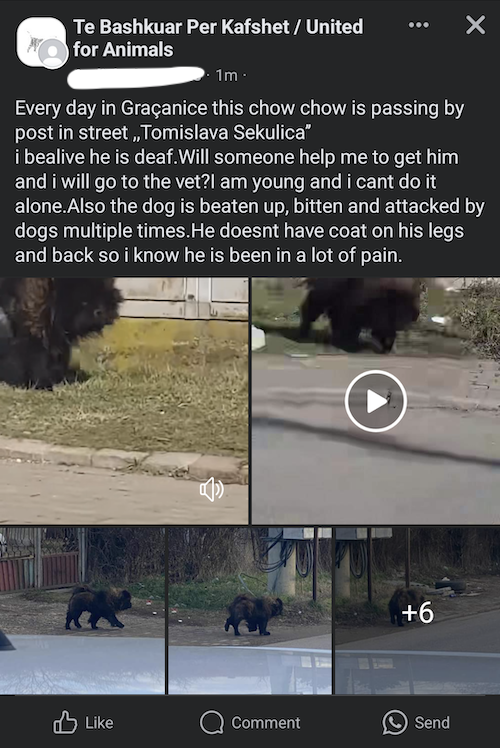
Everyday – full breed, family dogs are dumped on the streets of Kosovo.
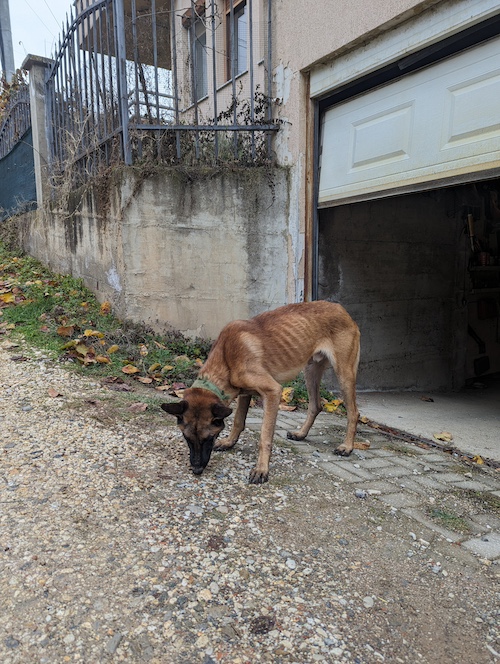
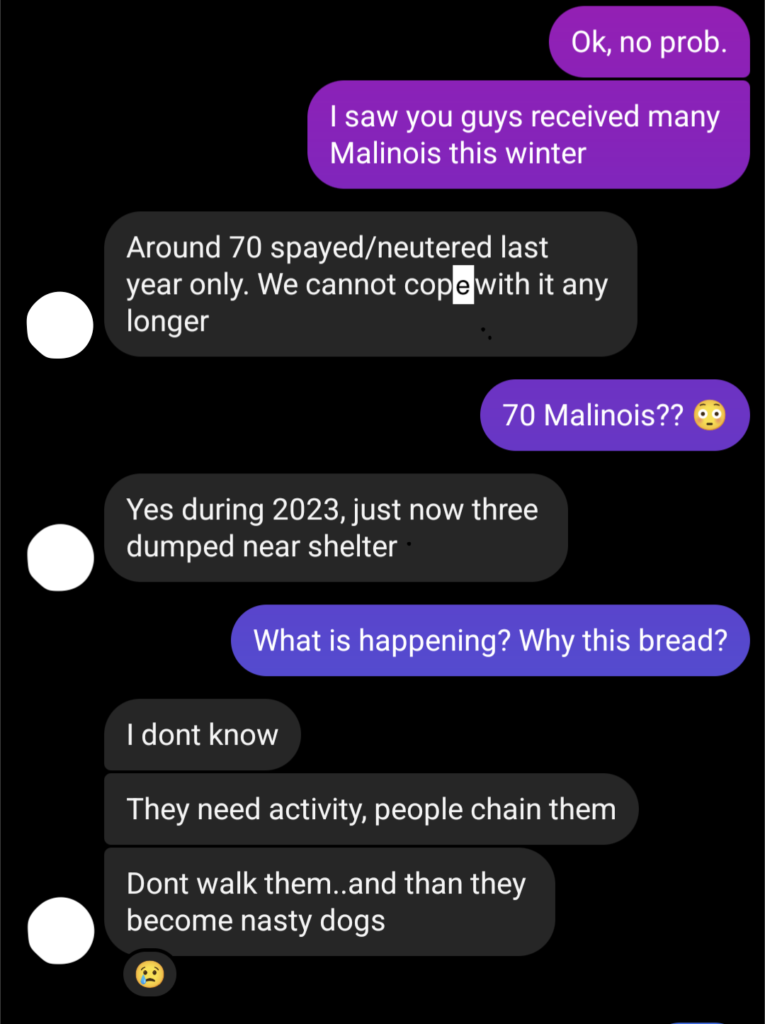
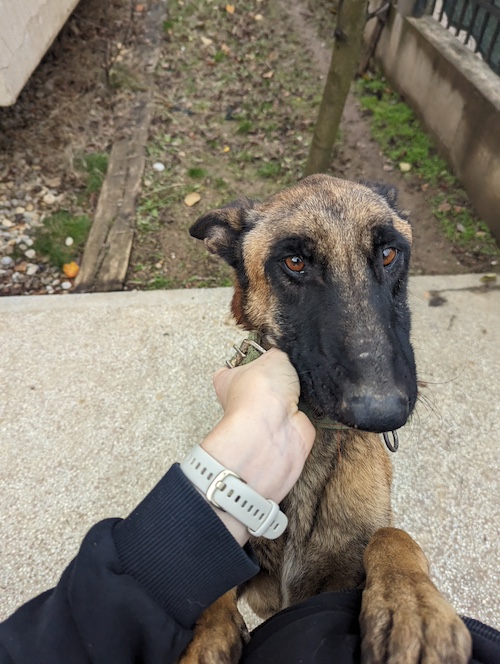
A starving Malinois appeared outside my house one day. Thanks to activists and sponsors, this good boy is now in Belgium starting a new life.
In 2023 only – a local dog shelter received 70 abandoned Malinois. This is only one of the shelters, and one of the popular breeds.
The lack of accountability when it comes to dog breeding, selling, and buying of full breed dogs is out of control, and has become the greatest problem to Kosovo’s street dog crisis.
Communities & NGOs
I am far from the only person frustrated with this reality. As soon as I arrived in Kosovo, I quickly found the communities of people who find it impossible to turn a blind eye to the situation. While the groups may have many followers online, only a handful of dedicated individuals actually roll up their sleeves and take action.
Navigating animal rescue initiatives without adequate resources is an uphill battle. Veterinary expenses are exorbitant everywhere, which leads to massive vet bills that are often never settled. Most importantly, you need people who care enough to volunteer their time and attention to nurture a sick or injured dog back to health. Space is another precious commodity in short supply. There may be willing foster families, yet most reside in small apartments with no outdoor areas.
Some of these groups have created their own rescue systems that involve many different players in order to rescue, rehabilitate, and eventually emigrate a dog to a new home – abroad. Most of the individuals spearheading these initiatives both locally and from abroad, are native Kosovars. They have built a small following of dog-lovers, and fundraising is the only way they are able to finance these efforts. Not only does 100% of all money raised go to the dogs, but majority of people leading these efforts use their own money to do so. I can attest firsthand to the unwavering passion and dedication of these individuals, having worked closely with them.
Here are two rescue groups I’ve personally collaborated with and wholeheartedly endorse. Any contribution you can make will directly contribute to saving a life.
For me, these online communities have been invaluable in supporting my own dog rescue efforts. As a foreigner navigating unfamiliar terrain and language barriers, seeking advice and support from locals has been instrumental in successfully relocating three dogs over the past year and a half. I owe the success of each endeavour to the guidance provided by community leaders.
Making Rescuing a Business

Unfortunately, not everyone involved in dog rescuing does it out of genuine love for animals. It’s not just breeders looking to profit at the expense of dogs’ well-being. Foster homes are private residences, often situated just outside cities where there’s enough space to accommodate multiple dogs. These homes operate as businesses, charging anywhere from 100 to 200 euros per month to provide shelter for a single dog. Each dog is sponsored by someone working to relocate them.
I once had to place a dog in a foster home for a few months. The foster caregiver had around 50 dogs under their care, which may seem like a lot, but compared to some places that cram over 300 dogs into cages, it’s relatively small. Just to give you an idea, renting a one-bedroom apartment in the city center costs about 200 euros. Paying 100 euros a month for foster care is significant, especially given the local economy.
There are some private fosters that can be trusted to care for each animal by providing adequate food, shelter, and attention that the dog sponsor is supposedly paying for. However, many of these foster homes see the profit potential in taking in multiple dogs and cramming them in their backyards. Placing a dog into foster care doesn’t necessarily improve the animals’ lives, considering they were used to roaming freely, and now they are confined to a cage with many other companions. Unfortunately, when rescuers have nowhere else to turn, foster homes become the only option.
There are also official city shelters funded by public money and donations. Running a shelter is undoubtedly challenging, a truly honorable occupation, and certainly not a high-paying job. However, it’s widely known that city shelters sometimes operate like private foster homes, charging a monthly fee to accept dogs. This poses a problem because shelters shouldn’t function this way, and it only worsens the existing issue of over-saturation of shelters. I’ve lost count of how many times I’ve reached out to shelters in the middle of winter, hoping to relocate a puppy, only to be turned down every time because there is “not enough space”.
Animal Welfare
There are other foundations and government entities responsible for enforcing animal welfare across Kosovo. However, many grassroots workers agree that rather than aiding the cause, these entities systematically allow cruelty towards animals to persist as the norm.
As long as the individuals leading these agencies continue to have old-fashioned perceptions of what is “right” and “wrong” regarding animal welfare – nothing will change. I have heard countless stories from local activists who brought cases to the AUVK (Ministry of Food and Veterinary) only to be met with insignificance and dismissal of their cases and requests.
For instance, consider the case of an elderly dog that was abandoned and chained outside a rural home. The dog was rescued by a team. Turns out it had two large cancerous tumors, and the dog died two months later. When another dog of the same bread appeared, tied and malnourished in the same spot as the previous dog, the team sought to hold the owner accountable for animal abuse. After review of the case, the Ministry simply concluded there was not enough proof that either the first or second dog had been abused. Shockingly, two large untreated tumors, perpetual chaining, and malnourishment failed to meet their threshold for “mistreatment.”
This is just one of many infuriating anecdotes I’ve encountered. Even in cases involving amputated paws, ears cruelly cut off, or dogs subjected to fatal fighting, the AUVK has consistently failed to follow up or take action on individual cases.
In October 2022 the National Strategy for Population Management was approved. This comprehensive strategy offers many tangible and culturally adequate solutions for the Kosovar context. Still today many of the measures of the strategy remain unimplemented. Even with the approval of legally binding laws, public action so far has utterly failed to take a firm stance towards animal cruelty.
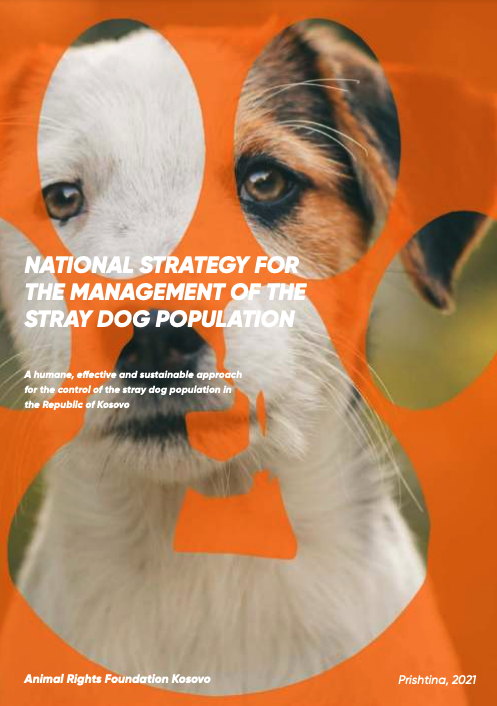
A humane, effective and sustainable approach for the control of the stray dog population in the Republic of Kosovo.
Farewell
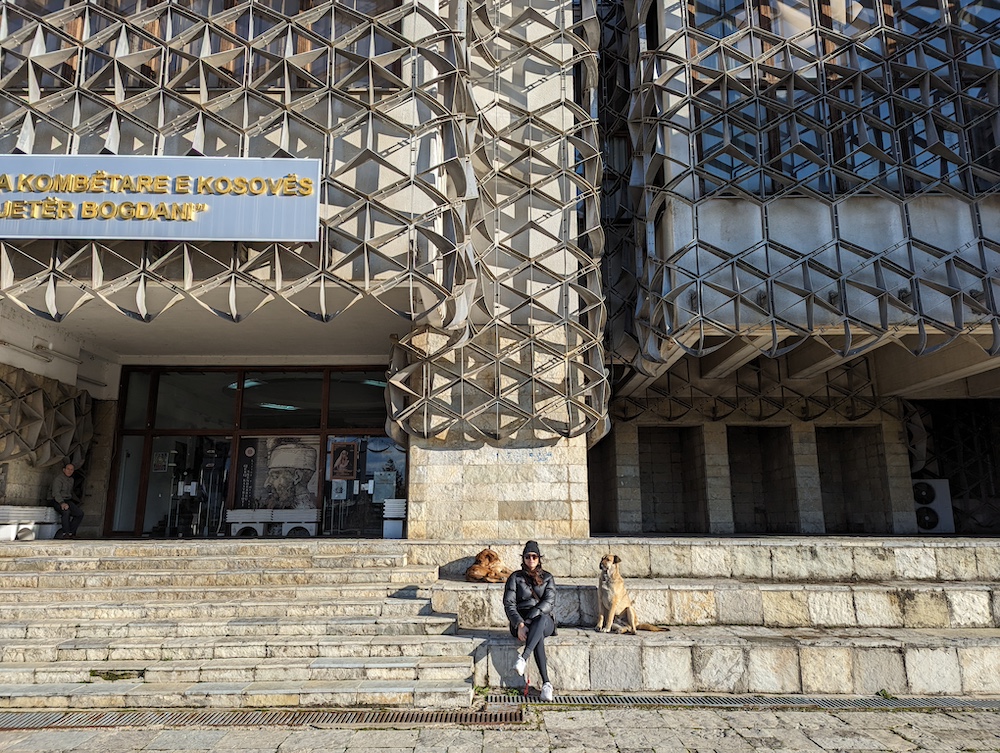
As I get ready to leave Kosovo for good after two years, I am overtaken by a feeling of betrayal. While I am moving on to new life projects, I am leaving all of the stray dogs of Pristina behind. With so few advocates on their side, I feel a profound responsibility to stand as one of their protectors.
The frustration of government inaction is a familiar burden. Yet, it’s the prevailing attitudes and deprecation of animals within local culture that have impacted me most. Accepting this as the “norm” has been my greatest challenge in adapting to life here.
Despite these challenges, I hold onto hope that the tireless efforts of community leaders will continue to galvanize society toward positive change. Through this post, I aim to spotlight their commendable work and rally international support for Kosovo’s street dogs.
I will miss my daily visits to Taukbash park, where my “usual suspects” eagerly await their daily dose of belly rubs and sausages.
I’ve always been an animal lover at heart, yet the street dogs of Pristina have ignited within me a newfound sense of purpose and responsibility. I now carry the calling to do what is within my power to improve the lives of so many miserable souls destined to a life on the streets. How and when I’ll fulfill this calling remains uncertain, but one thing is clear: the street dogs of Pristina have forever changed my life.
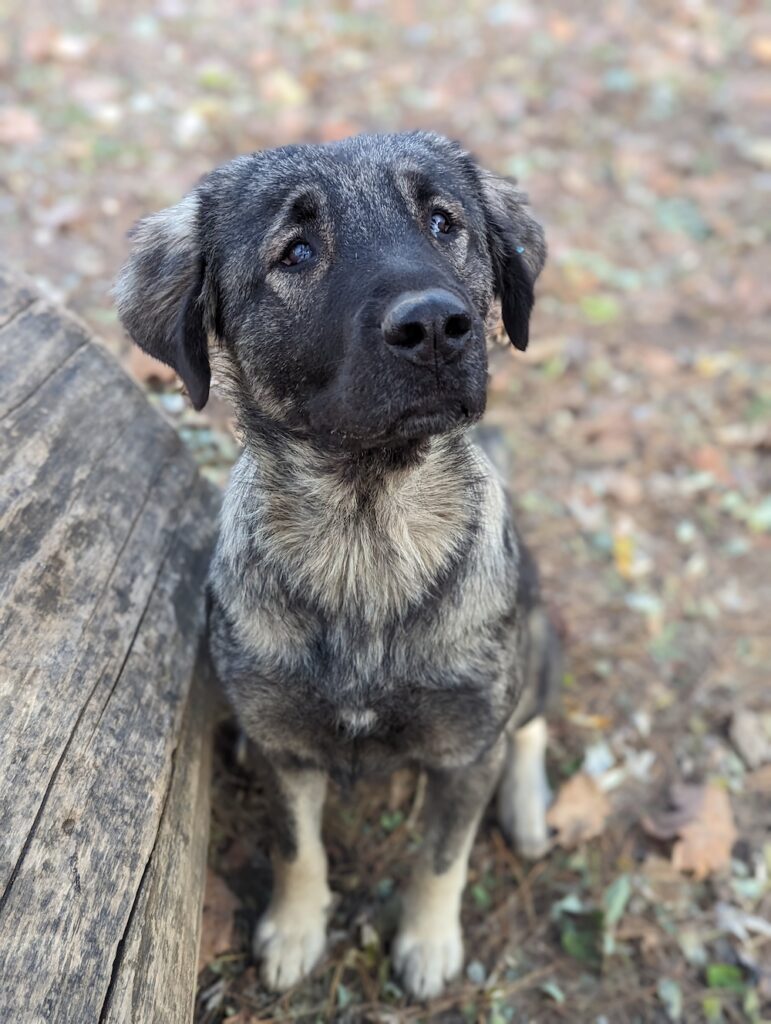
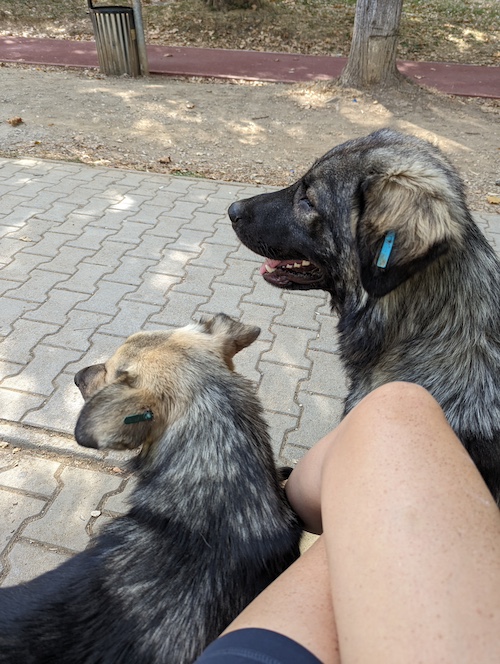


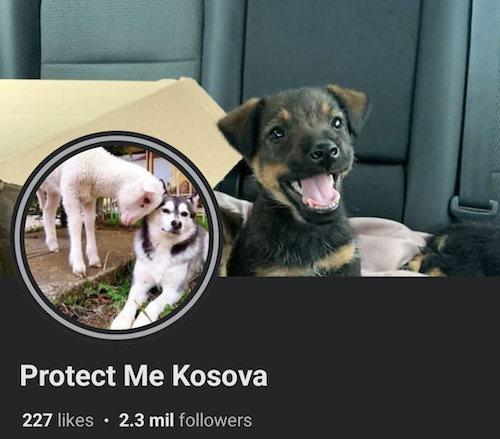
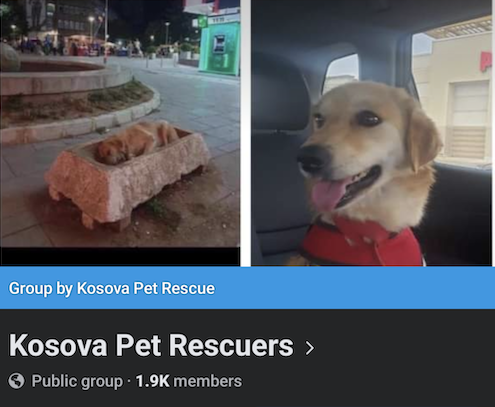



Lola
This article offers an illuminating perspective on the plight of stray dogs in Pristina. It is admirable that the article raises awareness of this issue, as it is indeed essential to support the welfare of these animals. Nevertheless, while some might attribute the neglect of these animals to the idea that dogs are considered impure in Islamic tradition, the article does not suggest that this problem might be rooted more culturally than religiously. Neglect seems to be widespread among various groups in Kosovo, not just Muslims, and I find it a little unfortunate that such a parallel is drawn without more comprehensive consideration.
CookieG
Hi Lola, thanks for reading and for your comment. I tried my best not to directly blame the problem on religion, it is definitely more of a broader cultural issue as you suggest. However, with more than 92% of the population being muslim, I felt it is relevant to consider this perspective as one of the influencing factors, not as the sole.